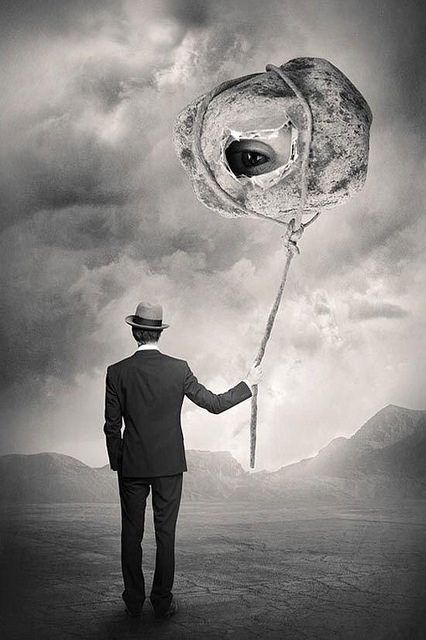When exploring the vast world of art, literature, and creative expression, the term “surrealistic” often surfaces. But what does it truly mean? How did it originate, and why has it maintained such a strong presence in artistic and cultural discourse? In this article, we will dive deep into the surrealistic definition, exploring its origins, significance, and application across different mediums.
What Does Surrealistic Mean?
At its core, the word surrealistic refers to something that embodies qualities of surrealism, a cultural and artistic movement that began in the early 20th century. To put it simply, surrealistic describes art, literature, or experiences that transcend reality, often blending dreamlike, illogical, and fantastical elements.
The term suggests an experience or depiction that feels beyond the ordinary, evoking a sense of the bizarre, the uncanny, or the extraordinary. It is an adjective used to describe things that challenge our conventional understanding of reality.
For example, a painting that portrays melting clocks floating in a desert would be considered surrealistic because it defies the rules of the real world and creates a dreamlike, almost hallucinatory effect.
Origins of the Term “Surrealistic”
The concept of the surrealistic finds its roots in the Surrealist movement, which emerged in the 1920s. Founded primarily in Europe, particularly France, the movement sought to unlock the creative potential of the unconscious mind. Influenced by the works of Sigmund Freud and his theories of dreams and the unconscious, Surrealist artists aimed to express thoughts and emotions unbound by rationality or logical constraints.
The term surrealism itself is derived from the French word surréalisme, meaning “beyond realism”. By extension, surrealistic came to describe anything that captures this essence of going beyond reality.
Famous pioneers of surrealistic art include Salvador Dalí, René Magritte, and Max Ernst. Each of these artists brought unique interpretations to the concept, yet all shared a fascination with the irrational, the dreamlike, and the subconscious.
Key Characteristics of Surrealistic Art
Understanding the surrealistic definition becomes easier when examining its distinctive characteristics. Surrealistic art and literature often share the following traits:
- Dreamlike Imagery: Surrealistic works frequently resemble the logic of dreams, where ordinary objects may be distorted, juxtaposed, or placed in unexpected contexts.
- Illogical Scenes: Events or compositions in surrealistic art may appear illogical, defying cause and effect or natural laws.
- Unexpected Juxtapositions: Surrealistic creations often place seemingly unrelated objects or ideas together, creating a striking or thought-provoking effect.
- Exploration of the Subconscious: A core goal of surrealistic expression is to explore the inner workings of the mind, tapping into hidden fears, desires, and impulses.
- Symbolism and Metaphor: Surrealistic works rely heavily on symbols and metaphors to convey deeper meanings, often leaving interpretation open to the viewer or reader.
By combining these characteristics, surrealistic art aims to challenge perception, disrupt conventional thinking, and invite viewers into a world where imagination reigns supreme.
Surrealistic Definition in Literature
While the term is often associated with visual arts, it also plays a significant role in literature. Surrealistic literature seeks to disrupt conventional narrative forms, using unexpected metaphors, dreamlike sequences, and stream-of-consciousness techniques.
For example, a surrealistic novel might depict time flowing inconsistently or feature characters who transform unpredictably. Writers such as André Breton, the founder of the Surrealist movement, and later authors like Haruki Murakami, have incorporated surrealistic techniques to explore the subconscious mind and human emotions.
In literary contexts, describing a piece as surrealistic often implies that it conveys a heightened sense of the fantastical or absurd, engaging readers in a mental experience that challenges reality.
Surrealistic Definition in Modern Culture
Today, the surrealistic definition extends beyond art and literature. It is frequently used in everyday language to describe experiences, events, or visuals that feel strangely dreamlike, unreal, or bizarre.
For instance:
- Watching a completely unexpected coincidence unfold might be described as a surrealistic moment.
- A film with visually impossible scenarios or imaginative worlds can be called surrealistic cinema.
- Even personal experiences, such as witnessing an awe-inspiring natural phenomenon, can be labeled surrealistic if they evoke a sense of wonder or disbelief.
The term has thus become a versatile descriptor, applicable whenever something challenges the norms of reality.
Examples of Surrealistic Art
To fully grasp the surrealistic definition, it helps to examine some iconic examples:
- Salvador Dalí’s “The Persistence of Memory”: Perhaps the most famous surrealistic painting, it features melting clocks in a dreamlike landscape, perfectly illustrating the bending of reality and time.
- René Magritte’s “The Son of Man”: This painting shows a man in a suit with an apple obscuring his face, creating a mysterious and surrealistic effect.
- Max Ernst’s “The Elephant Celebes”: Ernst combined mechanical and organic forms in illogical ways, creating a striking surrealistic composition.
These examples highlight the dreamlike, imaginative, and unconventional nature that defines the surrealistic.
The Influence of Surrealistic Concepts
The impact of surrealism and its derivative, surrealistic, extends into numerous creative fields:
- Film: Directors like David Lynch and Tim Burton use surrealistic elements to craft bizarre and captivating cinematic experiences.
- Photography: Surrealistic photography often manipulates reality, creating impossible or dreamlike imagery.
- Advertising: Some marketing campaigns employ surrealistic visuals to capture attention and create memorable impressions.
- Fashion: Surrealistic design in fashion challenges traditional aesthetics, blending unusual shapes, colors, and materials.
In each case, the surrealistic definition helps convey the sense of extraordinary imagination, creativity, and departure from reality.
Surrealistic Definition and Personal Experience
Beyond its artistic application, understanding surrealistic can also enrich personal experience. Moments in life can feel surrealistic when they are unexpected, extraordinary, or hard to process. This might include:
- Seeing a breathtaking natural event.
- Experiencing an intense coincidence or unlikely outcome.
- Encountering art or performances that evoke strong emotions or challenge your perception.
In all these cases, surrealistic captures the sense of being transported beyond ordinary reality, whether through art, literature, or life itself.
Conclusion
The surrealistic definition is more than just an adjective—it represents a philosophy of creativity and perception. Rooted in the Surrealist movement of the 20th century, it embodies the blending of reality and imagination, the exploration of the subconscious, and the embrace of the fantastical.

